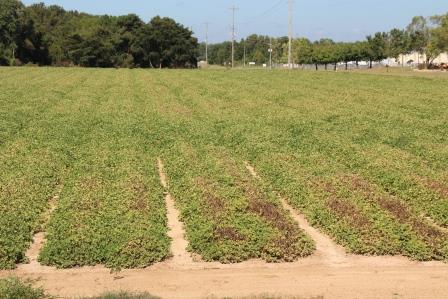As we approach harvest time of the 2014 Georgia peanut crop, we still need to be mindful of two spotted spider mites. This pest is present in many areas around the state and under hot, dry conditions populations can explode quickly. Peanuts with two or more weeks to go before digging are still at risk of losing yield to a late infestation of mites. We really need to be watching our non-irrigated peanuts and the dry corners of our irrigated fields for the initial signs of mite infestation. Mite “hotspots” will show up first as yellow circles in the field. These spots will then turn brown, and the yellowing will spread out from the source as the mites migrate to new plants.
Because mite populations can explode rapidly, damage can go from barely noticeable to severe in only a few days. No one wants to make another pest spray this late in the season, but we cannot afford to let fields with good potential get defoliated with three weeks to go before harvest. Management decisions will need to be made on a field by field basis taking into account profit potential, mite densities, and time to digging. Keep in mind that catching mites early is important for good control, but spotting signs of infestations is complicated when plants are suffering from drought stress.
The picture below is from a field where the spider mite population was expanding rapidly. The brown and yellow coloration in the top of the rows is due to spider mite feeding.
